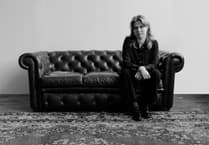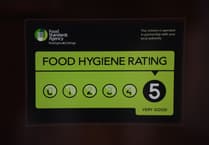BIRDS are at the centre of this summer’s exhibition at Penlee House Gallery in Penzance - Birds: the Art of Cornwall’s Birdlife - which runs from May 7 until October 4.
Birds are an important symbol of life in west Cornwall, featured on the county’s coat of arms, and a constant backdrop as they swoop, swirl and call across the cliffs, coastline, estuaries, hedgerows, farmland and gardens that make up our landscape.
It is the last exhibition in a series staged by Penlee over the past year, looking at the effects of our changing climate and lifestyle on the environment. This exhibition explores how artists working in Cornwall from the 1870s to the present have been inspired by birds.
Featuring paintings by artists such as Charles Simpson, Frank Heath, John Wells and Bryan Wynter; rarely seen Victorian engravings and taxidermy as well as contemporary photography and video, the exhibition will explore the art of birds and their habitats through the eyes of artists working in Cornwall over the past three centuries.
The exhibition is divided into a number of themes, from the ubiquitous gulls, to those birds found in and around our shoreline, estuaries and marshes; through to garden birds and domestic fowl, as well as more abstract observations of bird forms and movement.
Although the silky black chough is the county bird, the most notable and noisy feathered residents of our coastline are gulls, dipping and swooping around the rocks, snatching food and piercing the air with their calls.
Gulls of all shapes and sizes are synonymous with a visit to Cornwall, and a pesky companion for any resident living within a mile of the coast. Paintings of them are also a key feature of the exhibition. “Wheeling around the coast, diving for fish, or fighting over scraps, gulls are a dominant subject for Cornish wildlife artists” said Curator Katie Herbert.
Paintings range from detailed Victorian engravings of sandpipers, oystercatchers, gannets and razorbills, every feather carefully noted, to compositions of birds in their habitats by Charles Simpson and contemporary observations of shags and corvids, including choughs, by artists such as Kurt Jackson, Matt Johnson and Sarah Bell.
A film showing murmurations of starlings and images by local photographers Andy Lawrence and David Chapman also feature. Fitting in with the two previous exhibitions in the series, there is an element of conservation in the exhibition.
Katie Herbert continued: “The Royal Society for the Protection of Birds has been very kind in providing interpretation for the exhibition.
“Themes include gulls (and how their habitat and environment has changed); the effect of mankind on habitats; the effects of Avian flu on the bird population; and the increase or decline of certain species.”
The most renowned bird and wildlife painter from the Newlyn and St Ives School was artist Charles Simpson, who was a leading figure in the artists’ colony in the early 1900s, setting up the St. Ives School of Art with his wife, portrait painter Ruth Alison.
--Line-Fishing-Season--The-Box-Plymouth.png?width=752&height=500&crop=752:500)



